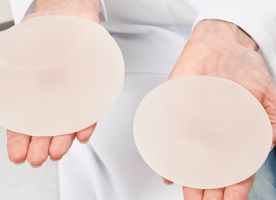Breast Lumpectomy in Ampang Jaya
Search and Compare the Best Clinics and Doctors at the Lowest Prices for Breast Lumpectomy in Ampang Jaya

















































































































































No Time?
Tell us what you're looking for and we'll reach out to the top clinics all at once
What does a Breast Lumpectomy Procedure Involve?
At its core, a breast lumpectomy procedure is a surgical process aimed at eliminating the cancerous or abnormal tissues from the breast while sustaining as much of the healthy tissue as possible. The procedure usually begins with a detailed consultation with the surgeon to review your medical history, discuss the operation and address any concerns or questions.
During the surgery, you will be administered general anaesthesia, and the surgeon will surgically remove the tumour – along with a margin of healthy tissue – after marking the area. This preventive measure ensures no cancerous cells are left behind. Upon completion of the surgery, the surgical incision is stitched up and thorough instructions pertaining to post-operative care are provided.
How Long Should I Stay in Ampang Jaya for a Breast Lumpectomy Procedure?
How long you stay in Ampang Jaya for a lumpectomy operation depends significantly on your individual health circumstances. Typically, lumpectomy is an outpatient surgery, which means you may likely go home on the same day of the procedure. However, some cases might necessitate an overnight stay for observation at the hospital.
Regardless of these scenarios, it's advisable to anticipate a few days of rest immediately following the operation as part of your comprehensive recovery plan. Subsequent check-ins with your healthcare provider after the surgery are also crucial, so you may need to stay in Ampang Jaya for about 7-10 days to attend these follow-ups and ensure that your healing process is progressing optimally.
What's the Recovery Time for Breast Lumpectomy Procedures in Ampang Jaya?
Recovery from a lumpectomy procedure is relatively quick for most patients; typically, normal activities can be resumed within a week. It's common to feel tired, experience breast pain, and temporary changes in sensation post-surgery. Depending on your pain threshold, over-the-counter painkillers or prescribed pain medication may be needed to manage any discomfort.
Typically, radiation therapy begins one month after surgery, which could also influence the recovery timeline. Furthermore, the healing process is not just physical but emotional as well. It's common to experience fear, anxiety, or depression during this period. Seeking support from professional therapists, support groups, or loved ones can be immensely helpful during recovery.
What's the Success Rate of Breast Lumpectomy Procedures in Ampang Jaya?
The success of breast lumpectomy procedures in Ampang Jaya has been widely documented. The key to this procedure's efficacy is complete removal of the affected tissues, while healthy tissues are left untouched. Research shows that the rates of breast cancer recurrence are notably low following lumpectomy complemented by radiation therapy.
Around 97% of women who underwent lumpectomy along with radiation have successfully survived their disease. Although the success rate is high, you will need to be aware of some side effects and risks that come with a breast lumpectomy, including infection, bleeding, pain, tenderness, temporary swelling, and changes to the shape of the breast.
Nonetheless, factors such as the patient's overall health, the type and stage of cancer, as well as the patient's response to auxiliary treatments such as radiation therapy or chemotherapy can influence surgical outcomes. Engage in open dialogue with your healthcare provider about your unique circumstances and possible results.
Are there Alternatives to Breast Lumpectomy Procedures in Ampang Jaya?
In Ampang Jaya, there are viable alternatives to breast lumpectomy procedures, with the most suitable choice primarily influenced by your individual health condition. Several treatment alternatives are available, some surgical and others non-surgical, each tailored to address specific patient cases.
Key alternatives include:
- Mastectomy: A more extensive surgical process that involves total removal of the affected breast. This procedure is generally considered when the cancer is more advanced or has spread to a larger region within the breast.
- Chemotherapy: A medical treatment using medication to destroy cancer cells. Chemotherapy can sometimes be employed before surgery to shrink tumours, or post-surgery to destroy any remaining cancer cells.
- Hormone Therapy: This treatment is particularly useful where the cancer is responsive to hormones. It involves medication that changes the body's hormone balance or blocks the cancer cells to prevent them from getting hormones.
- Targeted Drug Therapy: This is specific to patients depending on the biology and behaviour of their cancer cells. It includes treatments designed to target specific characteristics of the cancer cells, such as a protein that allows the cancer cells to grow in a rapid or abnormal way.
The treatment selection process considers various factors such as the type and stage of your breast cancer, as well as your overall health and individual preferences. A collective team of healthcare professionals including oncologists, surgeons, and other specialists in Ampang Jaya will collaborate to devise the most strategic treatment plan tailored to your needs.
What sort of Aftercare is Required for Breast Lumpectomy Procedures in Ampang Jaya?
Postoperative caregiving following breast lumpectomy primarily caters to wound care, managing pain, restrictions on physical activity, and regular medical check-ups. It's also important to watch out for signs of potential complications, such as fever, severe pain, or changes in the surgical area.
Your course of treatment may include secondary procedures such as radiation or chemotherapy to lessen recurrence risk. These therapies are integral parts of the overall cancer management plan and are just as important as the initial surgery. As part of your ongoing care, routine mammograms and other tests may be required to monitor for indications of cancer recurrence.
This information has been accurately sourced and verified by a medical professional for its accuracy, however, we strongly recommend you to consult with your doctor before pursuing medical procedures overseas.









